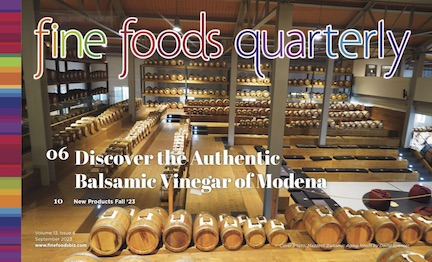
Product Labels Take On New Meaning
Educating consumers about the foods they eat has always been important and challenging at the same time. The trend in the specialty food industry has been driving towards more authentic foods that are reflective of the countries and cultures that they originate from. In some cases, the flavors and ingredients may be unfamiliar to the average consumer, making it more necessary than ever to provide some insight at point of purchase about the product via signage or on the product label itself. Now that so many consumers have a capable information device in their hands, the possibilities to connect a consumer to sources of information via the web that originate from a product label is quite viable. Most labels now identify the company website where a consumer can choose to conduct some research. Many labels now feature a QR code that can easily navigate the consumer to that source of information on the net, but that is assuming that a consumer knows how to utilize the technology or desires to do so. I think it is wise for food producers to include a basic statement about the product’s attributes, and the flavor profile on the label so that a consumer can make a quick and intelligent buying decision based on their own individual preferences. Obviously, the more expensive the retail price of the product, the more important it will be to provide a basic understanding and expectation as to the unique selling proposition of the product. In short, the product needs to sell itself, especially if it is displayed in an isle that is full of competing products.
The challenge is even more profound when it comes to products produced in Europe and other parts of the world, where additional terms such as DOP, PGI and others can signal a lot about the quality, origin, and authenticity of the product, but may not resonate with the American consumer that is unfamiliar with the importance of these designations. Often these imported products are made according to a precise production method to insure an exceptional product, require various lengths of aging to mature the flavor, and also face logistical challenges to getting the product to the American market at the peak of their freshness or flavor, all adding to their cost. In some parts of the world Consortiums have been established to represent the manufacturers of a certain variety of product and provide the much needed marketing support and production standards to grow the demand in the world markets and increase consumer awareness.
In this issue you will learn by example how many of the producers in the Consortium for the Protection of the Balsamic Vinegar of Modena have addressed this challenge by adopting a helpful flavor seal system to help consumers choose the appropriate variety of Balsamic Vinegar for their anticipated food preparation. This seal system will certainly help navigate a consumer to the right product, and enhance their product trial, which usually leads to more regular use. I do hope that more producers and or consortiums also improve the quality of information on product labels to better educate consumers as to the unique qualities of the product.

